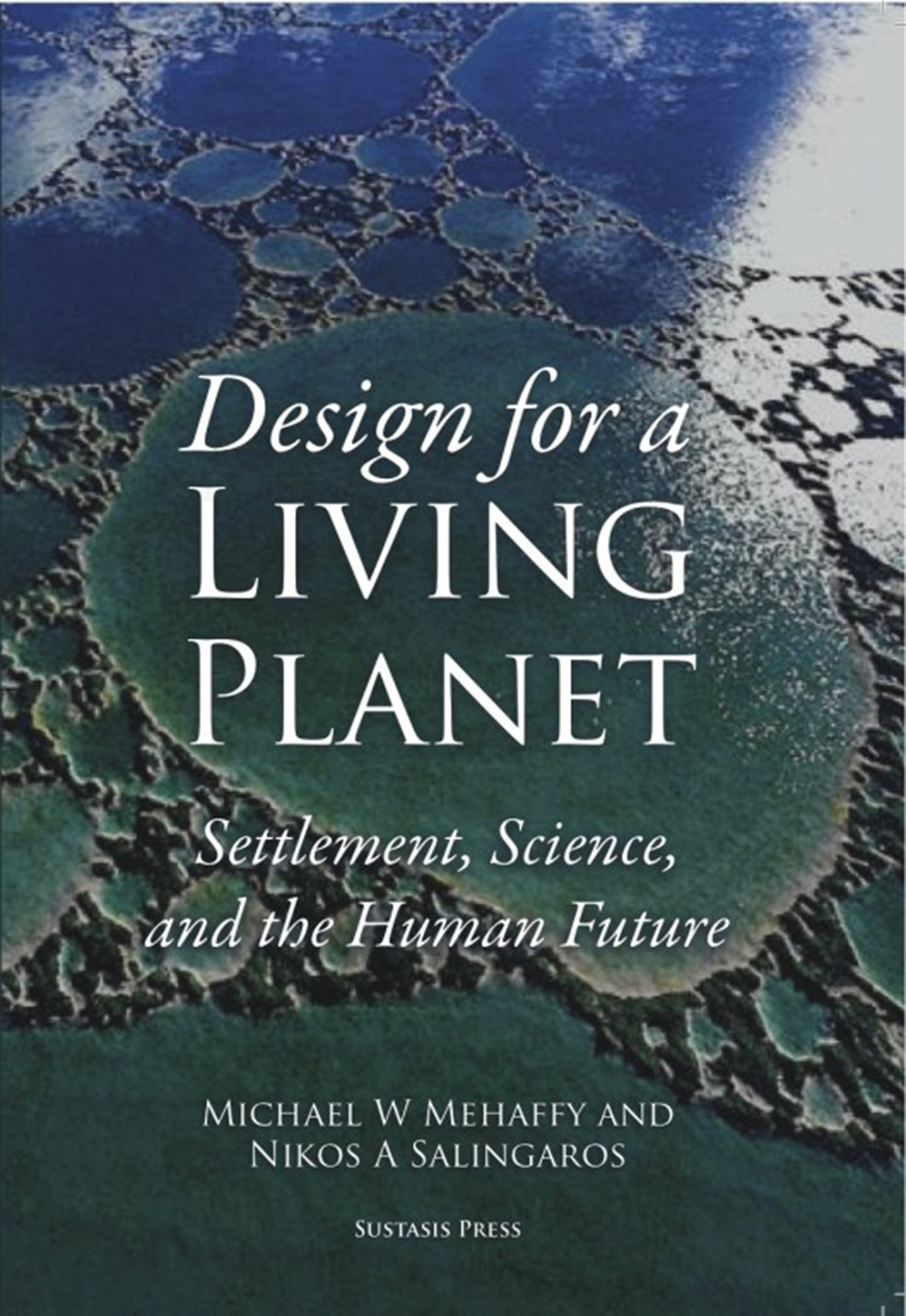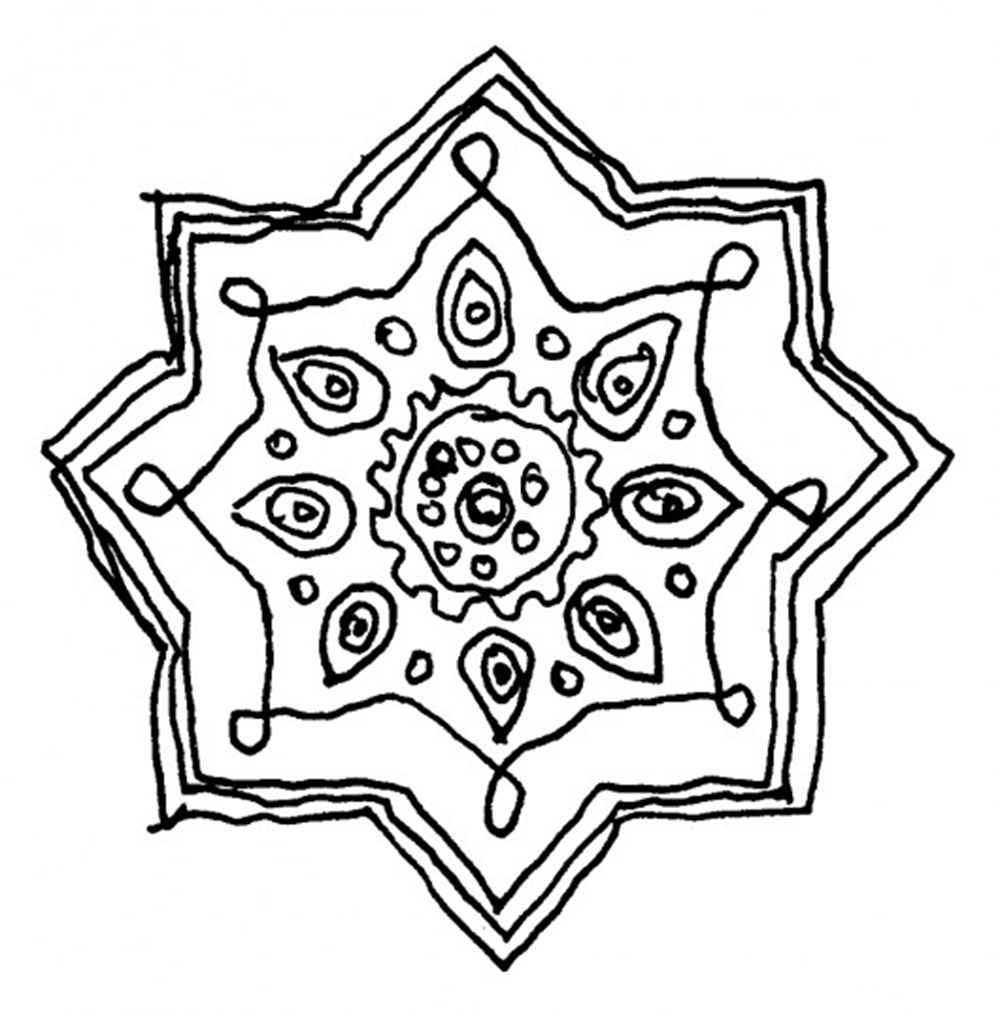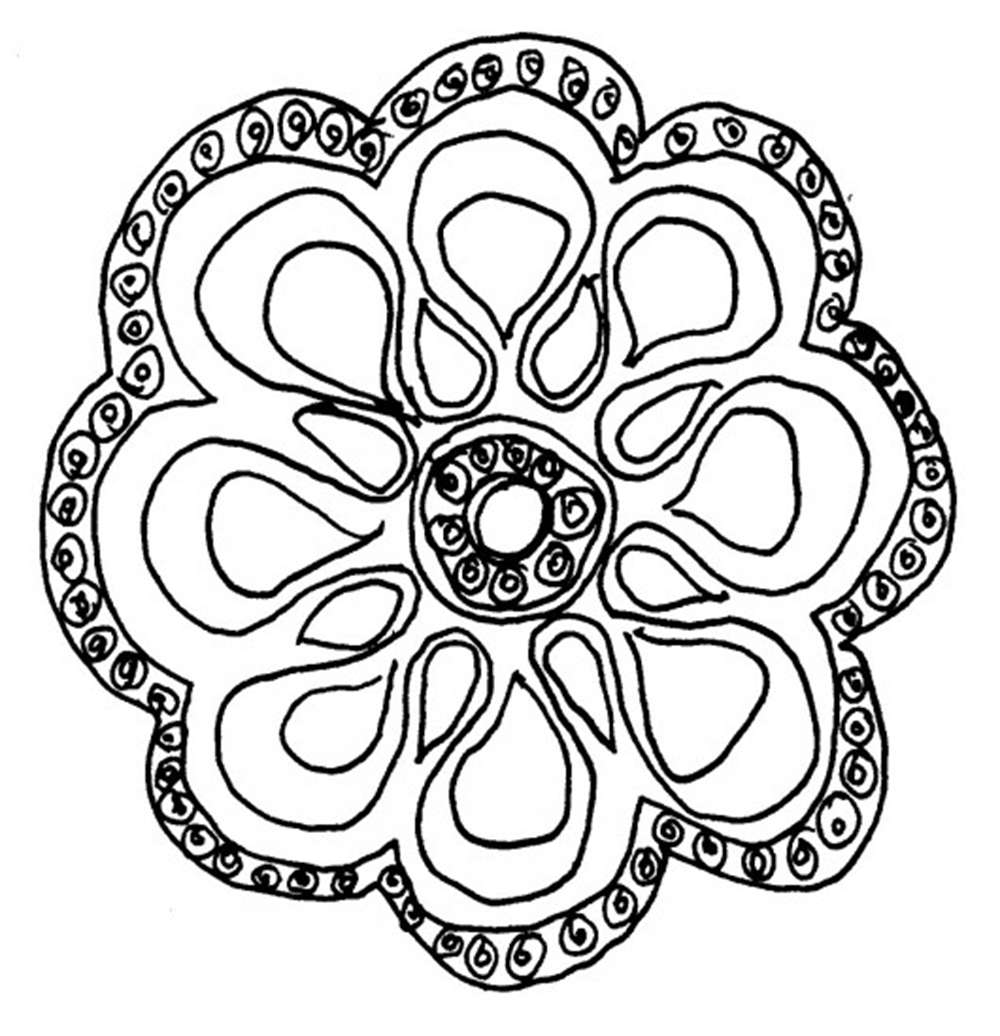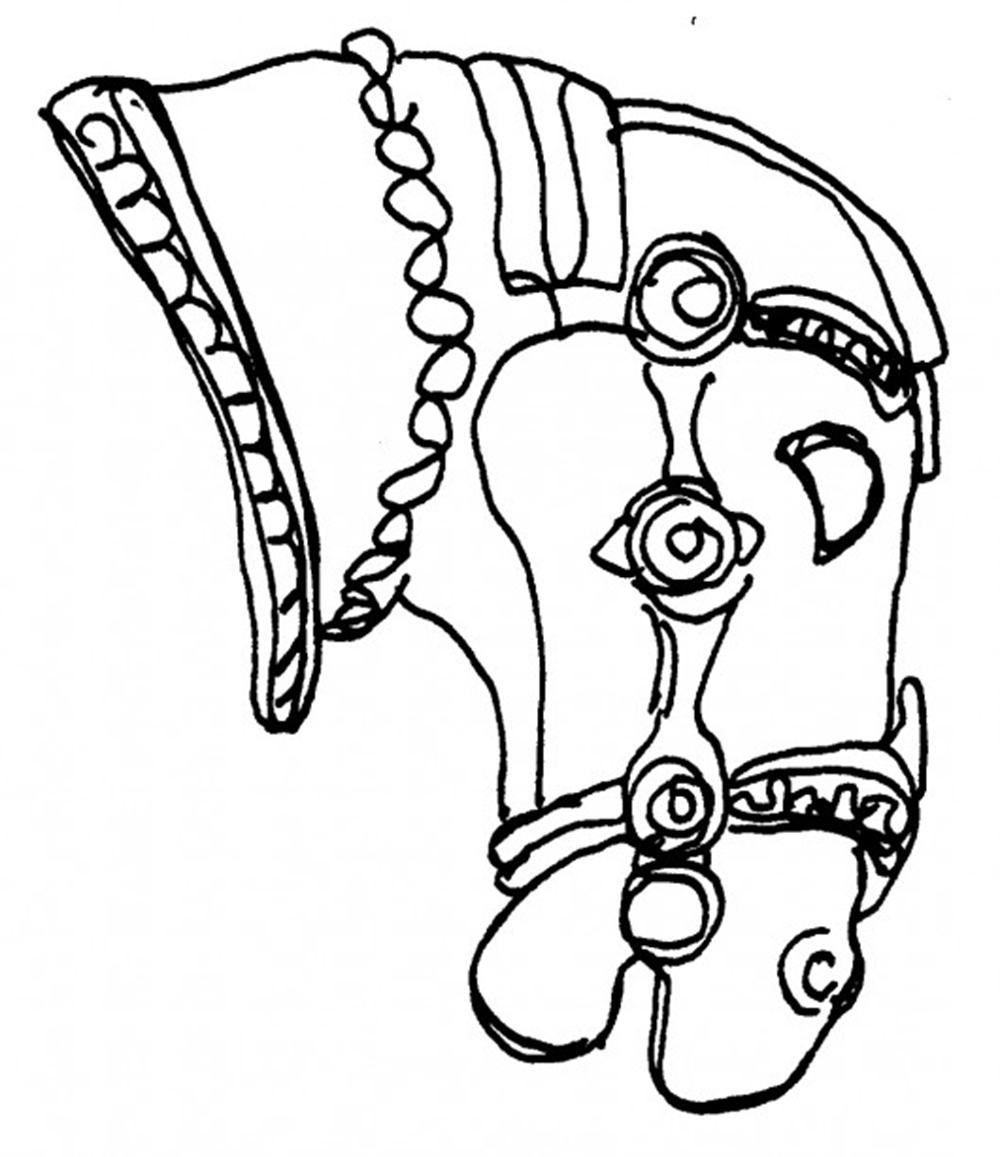
| Michael Mehaffy 和 Nikos Salingaros在他们的最新著作《Design for a Living Planet: Settlement, Science, and the Human Future》(《星球大设计:定居、科学和人类未来》)中,研究了影响甚至可能根本改变未来建筑的最新发展。下面是改编的系列摘录,总结了本书的内容。
In their latest book Design for a Living Planet: Settlement, Science, and the Human Future, Michael Mehaffy and Nikos Salingaros examine recent developments in science that will inform and possibly even radically alter the future of architecture. The following is an adapted series of excerpts that summarizes the content of the book.
| |
| 建筑历来关注自身的未来,也关注科学新发现及其在建筑工艺上的实际应用。如今我们确实看到极具异域风情的电脑设计的美丽建筑表皮、花键连接的形态和生成图示。对于一个不是科学家的人,这个工作可能显得极端科学化和“现代化”。我们也看到动荡破裂的宇宙的象征主义,其涵义的旧观念正面临令人痛苦的后现代挑战。
Architecture has always concerned itself with the future, and with the implications of findings from the sciences — as well as their practical applications to architectural craft. Today we do indeed see very exotic computer-designed aesthetic surfaces, splined forms, and generative schemes. To a non-scientist, this work might appear ultra-scientific and “modern”. We also see the symbolism of a turbulent, fractured Universe, wherein old ideas of meaning are facing anguishing post-modern challenges.
| |
| 但是从现代物理学家的观点,建筑仍然深陷过去的泥淖。
But from a modern physicist’s perspective, this architecture is still mired in the past.
| |
| 那是因为建筑怀抱在其核心造型理论中的“现代性”现在几乎有一百年历史了,它是过去纯朴工业时代过时的遗迹。当然“现代”建筑很多装饰性外表由尖端技术制成。但是它们实质上仍是用来支撑旧工业聚落方法的新奇噱头。建筑师让自己成为引人注目的艺术包装者,使用精致艺术文化的诱惑来帮助在全球推销夸张过时的项目。为了我们所有对可持续性的追求,我们实际上在与灾难同行。
That’s because the “modernity” that architecture embraces in its core theory of form-making is almost a century old now — an outmoded relic of a naïve industrial past. Of course, many of the decorative skins of “modern” architecture are made from cutting-edge technology. But they are still essentially novelty gimmicks used to prop up old industrial approaches to settlement. Architects have allowed themselves to become attention-getting artistic packagers, using the allure of fine art culture to help sell a generation of failing, sprawling settlement across the globe. For all our aspirations of sustainability, we are in fact in an unconscionable conspiracy with disaster.
| |
| 问题是我们没有真正地参与过定居过程,也没问建筑作为工艺和原理怎样能够在形成聚落过程中真正处于领导地位。这意味着超越艺术隐喻的活动为其它活动服务,有助于依据科学发现实际应用聚落科学。这些科学必须包括经济学、政治学、环境心理学和医学,也包括来自生物学、数学和物理学关于形成和成长动力方面的深刻见解。
of others, to actual practice of a science of settlement, informed by scientific findings. These sciences must include economics, political science, environmental psychology, medical science, and the insights from biology, mathematics, and physics about the dynamics of growth and form.
|
|
| 与医学类比特别恰当。聚落科学的应用必须和艺术与工艺一起应用,正如医学必须被有艺术与工艺的医师应用。就像医学行业,聚落科学必须植根于实证方法,必须有一个关心他人福祉的行业标准作为基础。
The analogy to medical science is especially apt. This application of settlement science must be implemented with art and craft, just as the science of medicine must be applied by medical practitioners with art and craft. Like the profession of medicine, it must be rooted in evidence-based methods, and it must have as its foundation a professional standard of care for the wellbeing of others.
| |
| 但是这意味着深入的再评估并对失败的专家模式进行改革。它意味着方法学、技术和“现代性”概念方面真正的革命,最终成为设计思想本身的革命。
But this implies a deep re-evaluation, and a reform of failing professional models. It implies a real revolution, in methodology, in technology, in conceptions of “modernity” — and ultimately, in the very idea of design.
| |
| 这些来自科学的见解是什么?我们这些物理学家、数学家和城市哲学家总结了其中十条,与其它部分一起都在新著《Design for a Living Planet》有详细论述。
What are these insights from the sciences? We (a physicist-mathematician and an urban philosopher) summarize ten of them, which are discussed in more detail, along with others, in the new book Design for a Living Planet.
| |

| 1.复杂自适应系统
各类设计者得到的一个重要教训是产品设计不能真正从环境设计中分离。某种意义上我们都是工作在人类环境中的环境设计者。因为每个系统只是部分封闭的,我们必须设法像在开放系统工作一样在这些系统中工作 ― 也就是说作为更大优化整体的一部分。老一套设计由于无法实现这样的系统而导致了我们的生态灾难。
1. Complex Adaptive Systems
A key lesson for designers of all kinds is that product design can’t really be separated from environmental design. We are all, in some sense, environmental designers, working in the human environment. Since every system is only partially closed, we have to find ways to work on these systems as open systems — that is, as parts of larger, optimizing wholes. Routine failure to do so has led to our ecological misfortunes.
| |
| 2.自组织
任何设计如果硬要追求一种“标准的”、“形式的”、预想的或者自我参照的建筑或者城市的类型学,那它在根本上是有缺陷的。因为它没有从当地条件出发计算一个自适应配置。很多二战后的城市规划因此不得不被丢弃。
2. Self-organization
Any design that seeks to impose a “standard”, “formal”, pre-conceived, or self-referential architectural or urban typology is fundamentally flawed, because it has not computed an adaptive configuration starting from the local conditions. Much of post World-War II urban planning has to be rejected on the basis of this result!
| |
| 3.网络城市
我们可以把建成的城市建筑和基建看作城市的“硬件”,它是一个基质,只有在付出相当多的时间和费用后才能够改变。这个“硬件”能够到处移动、连接、交换信息等等。简单地说,只要我们能获得无限的能源和支持资源,通过将网络连接的重担推给“软件”来运行较差的“硬件”,我们就能建造一个城市。但是电脑设计师非常清楚,设计不佳的硬件和日益复杂的软件一起使用会带来麻烦,迟早系统会变得难以管理。
3. The Network City
We can think of built urban structure and infrastructure as a city’s “hardware” — a matrix that can be changed only after considerable time and expense. The “software” is what can move around, connect, exchange information, etc. In a nutshell, as long as we have access to unlimited resources of energy and supporting resources, we can make a city with poor “hardware” run by pushing the network connectivity burden onto the “software”. But, as computer designers know only too well, using poorly-designed hardware with increasingly complex software is asking for trouble — it is only a matter of time before the system becomes unmanageable.
| |
| 4.弹性几何学
差异制造了熟悉的几何图形,比如局域对称性:举例来说,我们身体有两手两腿。感受这种(以及其它相关种类)对称性的能力是进化心理学非常重要的方面,也是促进人类福祉的环境属性。通过差异产生的对称性存在似乎同样对结构弹性必不可少。没有它结果会是毫无生气而僵硬的。差异引产生了对比,对称则在抵消均匀性的同时产生组群。
4.The Geometry of Resilience
Differentiation produces familiar geometries, such as local symmetry: for example, our bodies have two hands and two legs. The ability to perceive this kind of symmetry (along with other related kinds) is a very important aspect of our evolutionary psychology, and an environmental attribute that promotes human wellbeing. The presence of symmetry generated through differentiation also appears to be essential to structural resilience; without it, the result is lifeless rigidity. Differentiation introduces contrast, and symmetries introduce groupings, while counteracting uniformity.
| |
| 5.灵活的设计
这里只是举个例子,鸟群复杂的图形不是从任意的指定时刻、指定复杂形状的蓝图严格中创造出来的,那将是极其巨大的指令集。相反每只鸟只有些简单的规则来保持相对领头和相邻的位置。这些简单的指令相互作用,从而产生了鸟群漂亮复杂的几何图形。
5.Agile Design
The complex pattern of bird flocks, to take just one example, is not created out of a kind of rigid blueprint, specifying the complex shape at any given instant. That would be an overwhelmingly vast set of instructions. Rather, each bird has only a few simple rules for maintaining its position relative to its leader and neighbors. From the interaction of these simple instructions, the beautiful complex geometric patterns of the flock are generated.
|
|
| 6.缩放和分形
分形加载来自特有的分形结构的“生成算法”,更小尺度上的重复穿孔经常继续下行至细节和装饰的尺度。为什么会这样?似乎很可能我们这些使用者通过这些地方,发现如此复杂的环境(在非常精确的排序意义上是复杂的)是更易于理解的,更清晰的,更有效组织的,也是更漂亮的。
6.Scaling and Fractals
These repetitive perforations at smaller scales — the fractal loading that results from the characteristic “generative algorithm” of fractal structure — will often continue on down to the scales of detail and ornament. Why is this? It seems likely that we, the users, making our way through these places find such complex environments (complex in a very precisely ordered sense) easier to comprehend, more intelligible, more usefully organized, and more beautiful.
| |
| 7.循证设计
最终的确切产品在计算开始时并不完全明确;只有某些重要品质是事先决定好的,实现这些的需求驱动着设计的完成。如果产品一开始完全明确了,就不可能有调适,也就很可能在人文方面失败。
Evidence-Based Design
The exact final product is incompletely known at the beginning of the computation; only certain of its important qualities are decided beforehand, and attaining them drives the design to completion. If the product is completely known at the beginning, there can be no adaptation. It is likely to fail on human terms.
| |
| 8.生物自卫
其含义可能极其重大:审美设计选择不仅关系到设计者的艺术表现,让用户喜欢或不喜欢,而且和其它因素一起能改善或者损坏用户的健康。
8.Biophilia
The implications are potentially earth-shattering: aesthetic design choices are not just a matter of the designer’s artistic expression, for users to enjoy or not enjoy — together with other factors, they can improve, or damage, the health of users.
| |
| 9.计算不可化归性
在这个最简单的计算可归化的系统中(象简单的数学题),我们不需要迭代计算工作,但能用公式通过捷径达到最终状态。但是自适应设计过程的计算是不可归化的,如果我们认为能强加模板或者设法通过公式或捷径达到最后的构形,那我们是在愚弄自己。这就是“还原性谬论”,在20世纪和到21世纪目前为止多数建筑师和城市规划专家已陷入其中,结果他们的设计是非适应的,并最终功能失调。
9.Computational Irreducibility
In the very simplest, computationally reducible systems (like simple math problems) we don’t need iterated computational effort, but can shortcut to the final state — i.e., use a formula. But an adaptive design process is computationally irreducible, and we are fooling ourselves if we think that we can impose a template, or somehow reach a final configuration through a formula or shortcut. This is the “reducibility fallacy”, into which most architects and urbanists of the 20th- and so far in the 21st-centuries have fallen into, with the consequence that their designs are non-adaptive and ultimately dysfunctional.
| |
| 10.模型的进化
我们在机械思维的工业年代沉迷于新奇,因为它提供了市场营销的力量。新的!改善的!推论得到的思想是旧事物必须当作“不真实的”或者“过时的”丢弃。但是科学给我们展示了不同的世界:这里充满了循环、进化和模型,这些模型持续了几百万年,或者通过遗传过程得以再生。这就是进化如何经历无数的年代适应并且成功。这个启示寓意深远,人类建筑将不得不学习或者重新学习。
10.The Evolution of Patterns
Our mechanically-minded industrial age is obsessed with novelty, because it offers the power of marketing. New! Improved! A corollary is the idea that what is old must be discarded, rejected as “inauthentic” or “not modern.” But the sciences show us a very different Universe: one filled with recurrence, evolution, and patterns that endure for many millions of years, or are regenerated through genetic processes. This is how evolution adapts and succeeds over eons. It is a lesson that human architecture will have to learn, or re-learn — with far-reaching implications.
|
|

| 初次读来,这十个发现可能看起来太抽象而对建筑没有多少实际帮助。但是每个发现对于建筑如何构思有一系列非常具体的启示,并且带来的革命远离今天的实践模式,在失败的旧工业聚落模式上创造了新奇艺术外衣。
On first reading, these ten findings may seem too abstract to be of much practical help to architecture. But each of them carries a very concrete set of implications for how architecture is conceived — and a revolution away from today’s mode of practice, which creates novelty art-costumes over failing old industrial modes of settlement.
| |
| 可能最有用的实例由建筑师克里斯托弗•亚历山大提供,他是一位著名的杰出的理论家。鲜为人知的是亚历山大和他的同事在全球已经建造了300座建筑。他的思想也已形成很多方面的重要基础,象维基技术和维基百科,很多游戏软件,还有Mac、iPhone操作系统和其它技术。
Perhaps the most useful concrete example is offered by the architect Christopher Alexander — a well-known and brilliant theorist. What is less well known is that Alexander and his colleagues have built some 300 buildings around the world. His ideas have also formed the critical basis of wiki and Wikipedia, the software behind many games, and the operating systems of the Mac, iPhone and other technologies.
| |
| 亚历山大的工作成果仍然在继续,特别是在建筑和都市化的世界。他的研究显示了居住建筑和城市的配置通过交互式计算产生,在很多不同尺度创造了结构和时态的层级。在城市、社区、街道、建筑和装修细节各个尺度之间存在密切关系。城市不是项目的组合,而是这些发展关系的网络。
But the fruits of Alexander’s work are still coming — especially in the world of architecture and urbanism. His work shows that living architectural and urban configurations are generated through interactive computations, creating a structural and temporal hierarchy on many distinct scales. There is an integrated relationship between the scale of the city, the scale of the neighborhood, the scale of the street, the scale of buildings, and the scale of fine details. The city is not a composition of objects, but a web of these evolving relationships.
| |
| 亚历山大最初关心自然和人类建筑中的“形态发生”,“形态发生”是指形态随时间流逝而生长。我们都在生物学中听过这个词,它是生物体生长和转化到无限美丽和各种各样形状的一种方式。科学家正在开始梳理这个过程的进行方式。“形态发生”不是从头进行,而是从原配置模型的转化开始。这些模型存在于DNA以及组成细胞的蛋白质结构内部。当它们改变形状时适应了环境和彼此,这个过程被称为“自适应的形态发生”。亚历山大一直专注于将这些经验转换利用到建筑上。
Alexander’s primary concern is with “morphogenesis”, the growth of form over time, in nature and in human architecture. We’ve all heard about morphogenesis in biology — the way that organisms grow and transform into endlessly beautiful and varied shapes. Scientists are beginning to tease out the workings of this process. It doesn’t proceed from scratch, but from the transformation of patterns of previous configurations. The patterns exist within the DNA, and within the protein structures that form cells. They adapt to the environment and to each other as they transform their shape — a process known as “adaptive morphogenesis”. Alexander has been focused on the useful translation of these lessons to architecture.
| |
| 亚历山大最知名的也许是模式和“模式语言”方面的研究。模式是名为“实证设计”这一非常重要概念的工具,“实证设计”适应性强,能解决人类的问题并且满足人类需求。这个设计不是线性机械过程的产品,而是在进化周期中继续进行,出现于彼此互相适应的过程,成功的信息以DNA式的讯息传输。确实自然系统就是这样运作来解决问题并实现可持续发展,特别是它们保留并发展了自适应形式的信息。
Alexander is perhaps best known for his work with patterns and “pattern languages”. Patterns are a tool for a very important concept known as “evidence-based design” — design that is well-adapted to solve human problems, and to meet human needs. The design is not the product of a linear mechanical process, but emerges from a process of mutual co-adaptation, proceeding in evolutionary cycles, with the information on successes transmitted in a DNA-like message. Indeed, natural systems do work just this way to solve problems and achieve sustainability: specifically, they retain and evolve information about adaptive form.
| |
| 亚历山大认识到设计是种转化,这点伟大而博学的Herbert Simon也提出过,“从现存条件到最佳条件”。自适应设计不能从假定的白板条件开始,但永久能对现存的条件进行转化。甚至不同环境下类似的设计问题也要对不同配置进行转化。用数学术语讲,每个设计问题有不同的初始条件,这些条件强烈影响求解方法。
Alexander recognized that, as the great polymath Herbert Simon pointed out, design is a kind of transformation, “from existing conditions to preferred ones”. Adaptive design cannot start from a supposed tabula rasa condition, but will always transform what already exists. Even similar design problems, in different contexts, have the task of transforming distinct configurations. In mathematical terms, every design problem has distinct initial conditions that strongly influence the solution.
| |
| 按照“尺寸分布的统一规则”(由我们当中一员物理学家Bruce J. West遵循亚历山大的观点系统阐述),复杂系统中要素越小,就越多。尺寸和复杂性之间的关系被分形或者逆幂尺度法则统治,大多数稳定的自然和人工系统都遵守这个规则。这些系统包括动物的神经系统、植物的循环系统、哺乳动物的肺、电力网络、万维网和其它无数复杂网络。看看蕨叶、菜花和放大的雪花,我们能从图形上看到尺寸的分布。
According to the “universal rule for the distribution of sizes” (formulated by one of us and the physicist Bruce J. West, following Alexander’s insights) the smaller the elements in a complex system, the more of them there are. This relationship between size and multiplicity is governed by the fractal or inverse-power scaling law, which is obeyed by the majority of stable natural and artificial systems. These include the neural systems of animals, the circulatory systems in plants, the mammalian lung, electrical power grids, the World Wide Web, and countless other complex networks. Look at a fern leaf, a cauliflower, and a magnified snowflake to see this distribution of sizes graphically.
| |
| 这些见解作为一种通向未来建筑的地图,未来人类技术逐步呈现复杂的自然系统属性。最特别的是,这些人类技术必须获得自然系统能力来适应并保护它们自己的生存基础。如果没有如此深远的技术转变,建筑只能继续在下沉中的泰坦尼克号上制造异国情调的新躺椅。
These insights serve as a kind of map to the architecture of the future — a future in which human technologies increasingly take on the attributes of complex natural systems. Most especially, these human technologies must acquire the ability of natural systems to adapt, and to preserve their own basis for life. Without such a profound transformation in technology, architecture can only con tinue to make exotic novelty deckchairs on a sinking Titanic.
| |

|
关于作者:
Michael Mehaffy 是一位城市规划专家和设计理论家,是四个国家五所本科大学三个系(建筑、城市规划和哲学系)的定期访问教授或副教授。他一直以来与建筑和软件先驱克里斯托弗•亚历山大关系密切,也是建于1967年的亚历山大的研究中心环境结构中心的研究助理。他当前是总部位于俄勒冈州波特兰市Sustasis基金会的执行理事和《Sustasis新闻》的主编。
About the Authors
Michael Mehaffy is an urbanist and design theorist, and a periodic visiting professor or adjunct in five graduate universities in four countries and three disciplines (architecture, urban planning and philosophy). He has been a close associate of the architect and software pioneer Christopher Alexander, and a Research Associate with the Center for Environmental Structure, Alexander’s research center founded in 1967. He is currently executive director of Portland, Oregon based Sustasis Foundation, and editor of Sustasis Press.
| |
| Nikos A. Salingaros是一位数学家和博学家,因城市理论、建筑理论、复杂理论和设计哲学方面的工作而著称。他一直是建筑和电脑软件先驱克里斯托弗•亚历山大的亲密合作者。他现在是圣安东尼奥市德克萨斯大学数学教授,一直是意大利、墨西哥和荷兰大学建筑学院成员。
Nikos A. Salingaros is a mathematician and polymath known for his work on urban theory, architectural theory, complexity theory, and design philosophy. He has been a close collaborator of the architect and computer software pioneer Christopher Alexander. He isProfessor of Mathematics at the University of Texas at San Antonio and has been on the Architecture faculties of universities in Italy, Mexico, and The Netherlands.
| |
| 本文来源于:http://www.archdaily.com/
编辑: 倪明辉,卢荣姝
| |
|
|

 A 住宅/ Wiel Arets Architects
A 住宅/ Wiel Arets Architects
